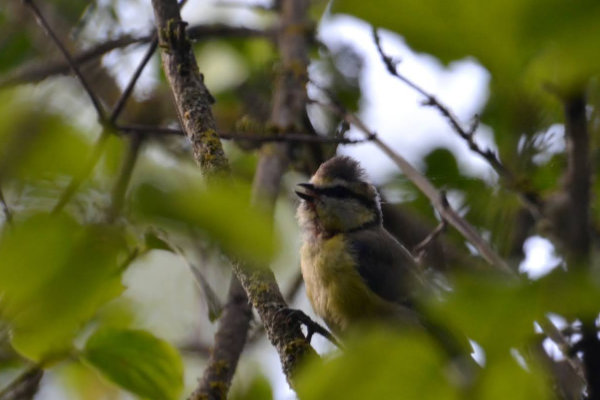séminaire vendredi 21 octobre
 Heterospecific communication and syntax in Parids’ mobbing calls
Heterospecific communication and syntax in Parids’ mobbing calls
Ambre Salis, doctorante au laboratoire LEHNA, Lyon
vendredi 21 octobre à 11 heures, amphi d’Orbigny
Abstract
Instead of fleeing, prey sometimes cluster around predators and actively harass them. This behaviour, called mobbing, is common in birds. Recent research on mobbing calls in Parids (e.g., the Great tit Parus major) demonstrated an interesting parallel with linguistic concepts such as compositionality (= when the meaning of a sequence is determined both by the meaning of its different parts and by the way they are combined). Yet, little information has been published on how combinatorial calls are produced and received by Great tits. Gaining more information on the production and reception of mobbing calls in the Great tit was the first goal of my thesis project.
Secondly, if this species does produce combinatorial calls, we can hypothesize that they are also able to recognize syntactic variations in other birds. I will therefore present three experiments that explored the relative importance of syntax on the response of Great tits to unknown heterospecific calls. In addition to interesting debates around language properties in animal communication, this work emphatizes the various mechanisms operating in heterospecific communication.
- extrait:
- lien_externe:
- titre:
- intervenant:
- date:
- kc_data:
- a:8:{i:0;s:0:"";s:4:"mode";s:0:"";s:3:"css";s:0:"";s:9:"max_width";s:0:"";s:7:"classes";s:0:"";s:9:"thumbnail";s:0:"";s:9:"collapsed";s:0:"";s:9:"optimized";s:0:"";}
- kc_raw_content:
 Heterospecific communication and syntax in Parids' mobbing calls
Heterospecific communication and syntax in Parids' mobbing callsAmbre Salis, doctorante au laboratoire LEHNA, Lyon
vendredi 21 octobre à 11 heures, amphi d'Orbigny
Abstract
Instead of fleeing, prey sometimes cluster around predators and actively harass them. This behaviour, called mobbing, is common in birds. Recent research on mobbing calls in Parids (e.g., the Great tit Parus major) demonstrated an interesting parallel with linguistic concepts such as compositionality (= when the meaning of a sequence is determined both by the meaning of its different parts and by the way they are combined). Yet, little information has been published on how combinatorial calls are produced and received by Great tits. Gaining more information on the production and reception of mobbing calls in the Great tit was the first goal of my thesis project.
Secondly, if this species does produce combinatorial calls, we can hypothesize that they are also able to recognize syntactic variations in other birds. I will therefore present three experiments that explored the relative importance of syntax on the response of Great tits to unknown heterospecific calls. In addition to interesting debates around language properties in animal communication, this work emphatizes the various mechanisms operating in heterospecific communication.
